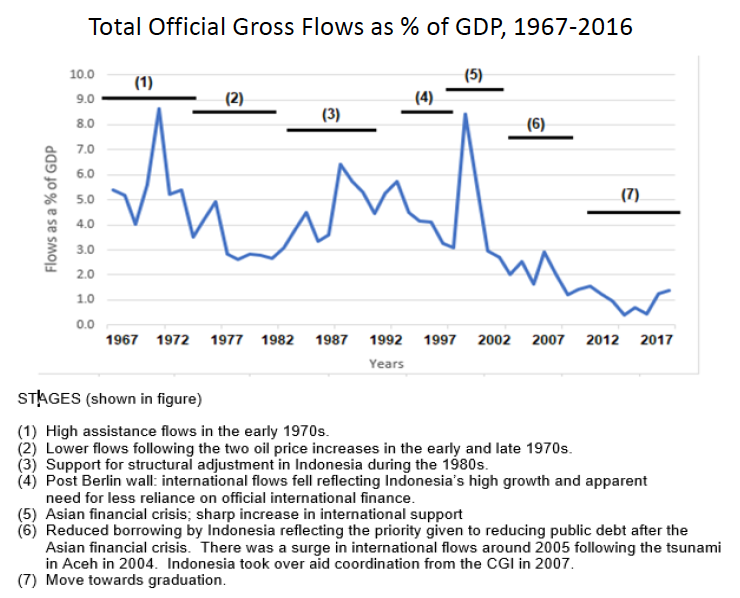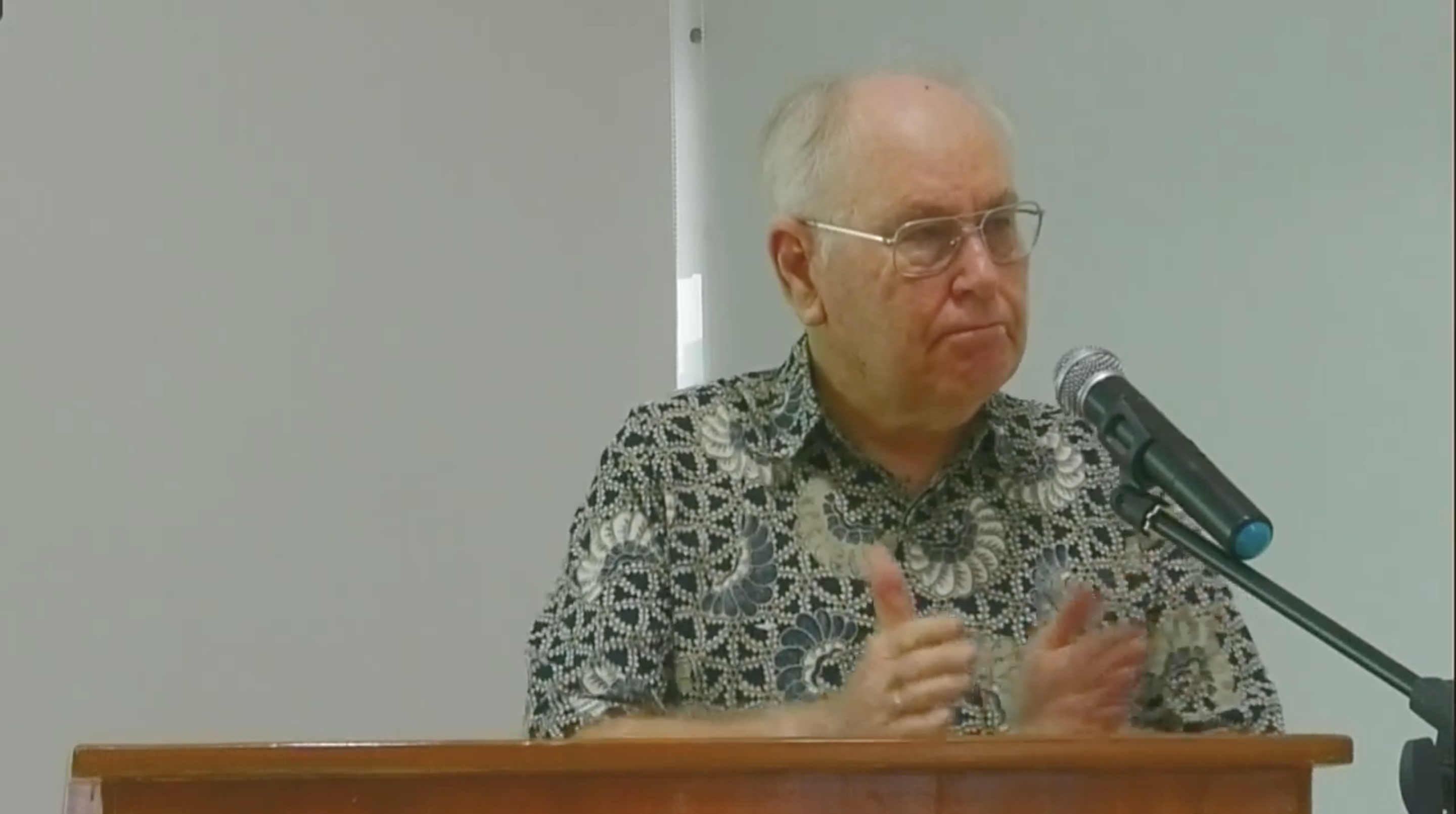Like other countries in Asia, Indonesia has experienced astonishing growth since the 1950s. However, a huge capital gap between Indonesia and developed countries remains. There are various means to increase Indonesia’s capital stock, from education to good governance. Not any less important is development cooperation (DC), which has been sustained on a large scale for the past 50 years in Indonesia. How was the dynamics between the key elements of the large-scale DC program? The topic was discussed at an FKP event on Thursday, 5 March 2020 in Jakarta by Peter McCawley based on his research for the book which he authored entitled Indonesia and the Asian Development Bank: Fifty Years of Partnership (2020).
Cooperation for development in Indonesia started in the late 1960s with the establishment of the Inter-Governmental Group on Indonesia (IGGI) which aimed to help the flow of foreign funds to the nation as it faced severe difficulties due to the economic collapse with the fall of then President Soekarno and the political upheaval at the time.. Since then until 2016, US$340 billion had flowed to Indonesia. The number of gross flows coming to Indonesia fluctuated throughout the years as the international community adjusted to Indonesia’s needs. From funding individual projects at a sectoral level in the late 1960s, the international community had shifted to funding Indonesia’s broader development agenda.
The DC program in Indonesia has been one of the largest sustained DC programs in the world. With DC contributing to capital accumulation in Indonesia, DC can be deemed a success despite its ups and downs. Behind the success, the strong and effective leadership on the Indonesian side was well-combined with the willingness of the international community to provide support. Looking ahead, Indonesia might open up new relationships with more partners to support its development and the development of nearby regions and beyond.
For the complete presentation and Q&A session, please refer to the video and materials provided.




